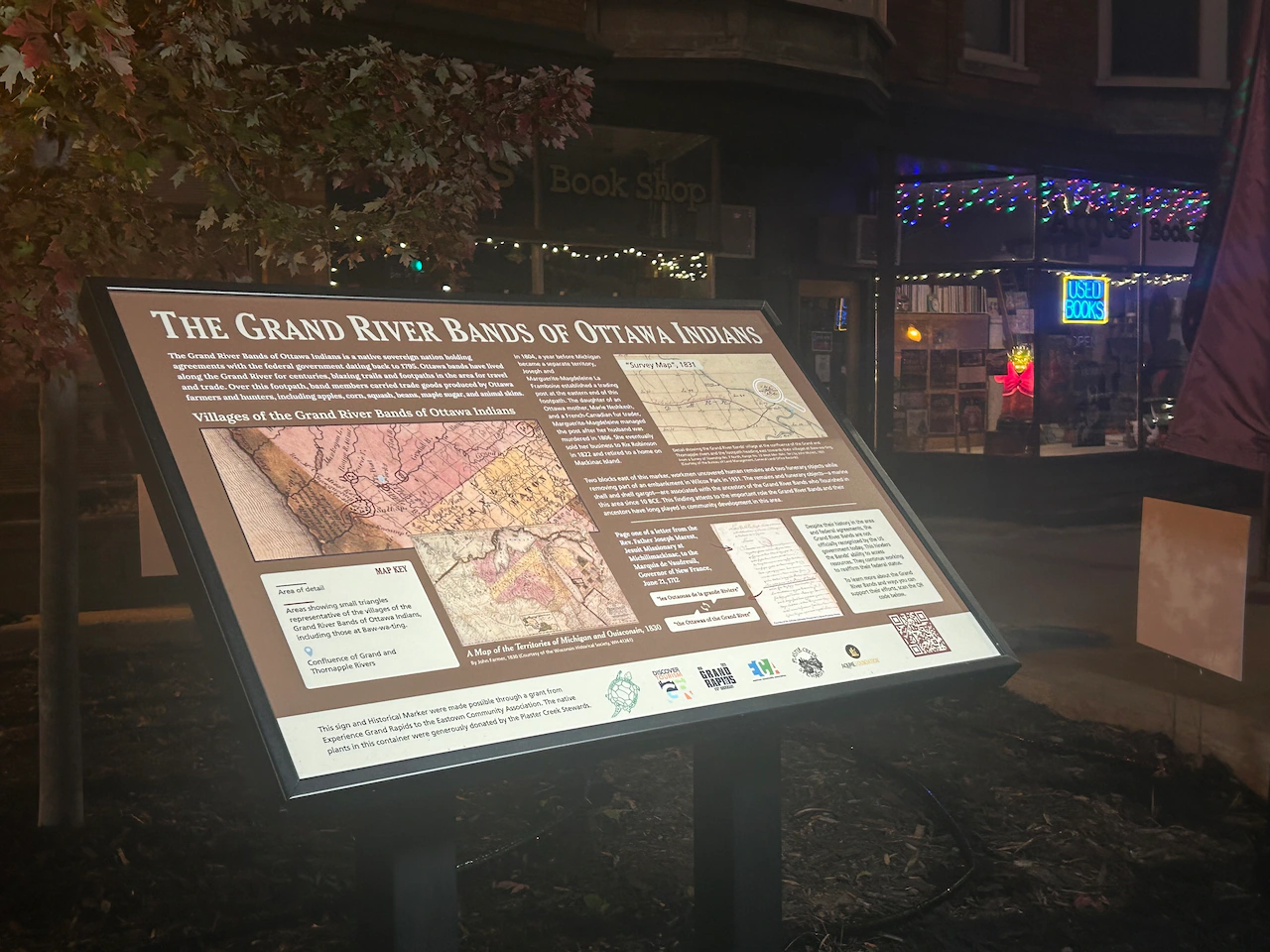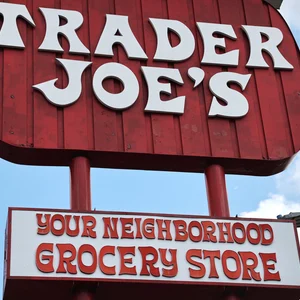Copyright M Live Michigan

GRAND RAPIDS, MI - A more than 200-year-old Indigenous trade route has been commemorated by the Grand Rapids community, honoring its deep cultural and historical significance. The Grand River Bands of Ottawa Indians tribal members and community leaders gathered Oct. 27 to unveil an educational sign that highlights the significance of the Grand River Bands. In the coming months, the site will also be recognized by a Michigan Historical Marker. The footpath ran along present-day Fulton Street, Lake Drive and Robinson Road in Eastown. “Our tribe is deeply appreciative of efforts to preserve and underscore our long and storied history in West Michigan,” said Ron Yob, chairman of the Grand River Bands of Ottawa Indians. “As we work toward reaffirming our federal status, I’m proud that our local community values our tribe’s contributions and continues to share our history with the next generations.” The commemoration was planned by the Eastown Community Association (ECA). Steve Staggs, program coordinator at ECA and a professional historian, brought the idea of memorializing the footpath earlier this year to ECA’s board of directors. Partnering with the Grand River Bands, the ECA received funding for the effort by Experience GR through its Discover Tourism grant program, which helps fund projects that improve local neighborhoods, benefit residents and attract tourists. “Our people didn’t have a lot. Our self-esteem wasn’t really high for years because we didn’t have a lot of sports stars or politicians or doctors and lawyers in our communities,” Yob told MLive. “We were never put in any kind of spotlight, so for my grandchildren to see that their grandpa can actually exist in the dominant culture is important because they realize that they can do that, too.” The educational signage at 1405 Robinson Road SE showcases how the footpath was used to transport goods produced by Ottawa farmers and hunters. A trading post operated near the confluence of the Grand and Thornapple rivers in the 1800s in what is present-day Ada. In 1931, city workers uncovered human remains and funerary objects in Wilcox Park associated with the Grand River Bands, located a couple of blocks east of the convergence of Robinson Road and Lake Drive. Although sacred spaces were disturbed to make way for these present-day roads and city developments, Yob said the historical recognition signifies that Indigenous communities have been here for centuries and will continue to be. “My great-great-grandfather was actually the chief of the village in Ada,” Yob said. “I just know it has to please those ancestors that our people are still here and we still walk in the same footpath where they laid their footprint. “We’re still here. We haven’t gone away. We’re still thriving and alive and well.” Earlier this month, the ECA invited neighbors and tribal members to participate in the Plaster Creek Stewards’ annual community planting day, where attendees planted native plants provided by Plaster Creek Stewards in the large circular planter at the corner of Lake Drive and Robinson Road. The sign and marker will also be installed in this planter. The sign details the historical significance of the area, providing information to visitors so they can learn more about the Grand River Bands and the tribe’s advocacy for federal recognition. At the Oct. 27 event, Grand Rapids Mayor David LaGrand emphasized the historical significance, describing that the city stands on land shaped by the Grand River Bands and their enduring presence here. “The Grand River Bands have played such an important role in our community for centuries, and we at the ECA are very proud to recognize and showcase that history,” Staggs said. “We’re honored to partner with the tribe and showcase its connection to our neighborhood so future generations can continue to learn about our local history.” The Grand River Bands of Ottawa Indians is a native sovereign nation with agreements with the federal government dating back to 1795. The tribe was originally composed of 19 bands of Ottawa people who lived along the Grand River and other waterways in southwest Michigan. Most of the Grand River Bands’ current membership resides in Kent, Muskegon and Oceana counties. The local tribe has advocated for federal recognition for more than three decades, first filing a notice to petition with the U.S. Bureau of Indian Affairs Office of Federal Acknowledgement in 1994. Tribal leaders continue to work with officials on the administrative acknowledgement process. At the same time, the tribe is working with members of Congress on bills in the U.S. House and Senate that would reaffirm federal acknowledgement. Federal acknowledgement would give members access to important resources, including social services, education, housing, elder care and the ability to exercise treaty rights — benefits that are only afforded to federally recognized tribes. U.S. Rep. Hillary Scholten, who spoke at the event Monday evening, is a longtime champion of the tribe as a lead co-sponsor of the Grand River Bands of Ottawa Indians Restoration Act of 2025 alongside U.S. Rep. John James. The bill aims to reaffirm federal acknowledgment for the Grand River Bands. “I am committed to working to help secure recognition for places like this one, and to ensuring that native sovereign nations across Michigan are recognized by the federal government,” Scholten stated. “I am proud to be the sponsor of the bipartisan Bands of Ottawa Indians Restoration Act and will continue fighting in Congress to get it passed.” In November, the Michigan Historical Commission will meet to consider language for the historical marker that will be installed in the same area.



